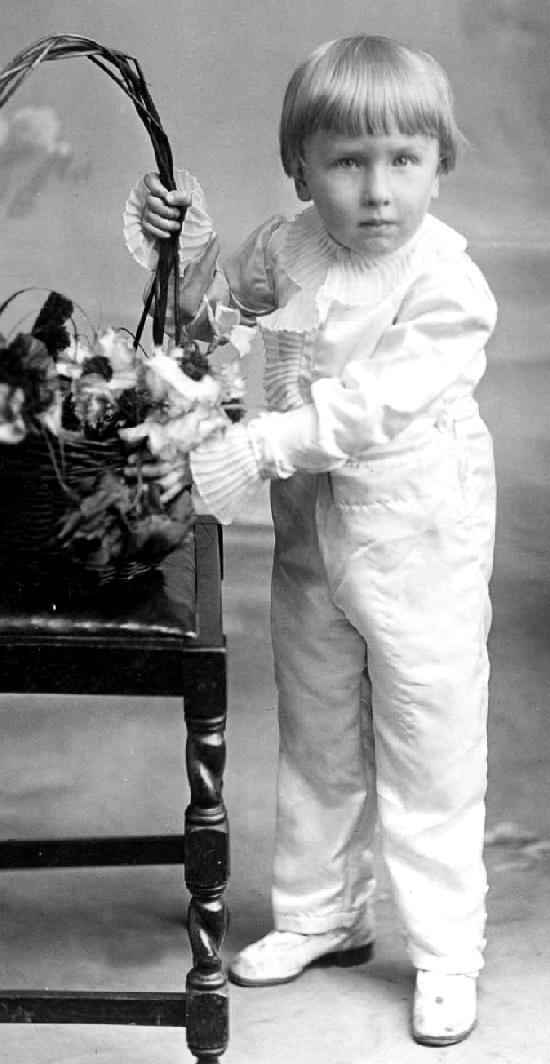
Figure 1.--This undated English postcard shows an unidentifed boy wering a fancy blouse with ruffled trim. He was photographed by Griffiths of Bow, East London -- probably circa 1920. Image coutesy of the MD collection. |

|
Our information on English blouses is still quite limited because of our small 19th centuty archive. We do, however, have some information. We have very little infotmation on blouses in the ealy-19th century. This appears to be when the Eton collar appeared, the most English of all collar styles. We begin to learn more with the advent of the CDV and the exponential increase in available images (1860s). Eton collars seem popular throughout the 19th century and into the eatly-20th century. We see a range of styles in the mid-19th century. But they seem generally small and often hidden by the clothes. The size of collars grew (1870s) and reached large sizes (1880s). This ccontinued until the turn-of-the 20th century. These large fancy collars began to decline in popularity during the 1910s, especually during World War I (1914-18). Soft collars generally replaced detachable collars, including Eton collars (1920s). We noted both different types and styles of blouses as well as changes over time. The term blouse comes from essentialy shirts without shirt tails, Many were bloused at the waist, but we also see button-on styles as well as blouses worn with suspender pants. Suspender pants seem more popular on the Continent than Britain. These were shirt-like garments for younger boys and girls. The most common blouse style was of course the sailor-styled middy blouse. We also notice younger boys wearing fancy blouses trimed in lace and ruffles in a variety of different styles. We notice Fauntleroy blouses in the late-19th an early-20th century. Some appear to have been for formal occassions like weddings. The boy seen here was probably a member of a wedding party (figure 1). They were not nearly as common as in France. We notice some younger boys wearing blouses with Peter Pan collars.
We noted significant changes in blouses over time. Our information on English blouses is still quite limited because of our small 19th centuty archive. We do, however, have some information. We have very little infotmation on blouses in the ealy-19th century. This appears to be when the Eton collar appeared, the most English of all collar styles. We begin to learn more with the advent of the CDV and the exponential increase in available images (1860s). Eton collars seem popular throughout the 19th century and into the eatly-20th century. We see a range of styles in the mid-19th century. But they seem generally small and often hidden by the clothes. The size of collars grew (1870s) and reached large sizes (1880s). This ccontinued until the turn-of-the 20th century. These large fancy collars began to decline in popularity during the 1910s, especially during World War I (1914-18). Soft collars generally replaced detachable collars, including Eton collars (1920s). As in America, by this time boys began to increasinglywear shirts rather than blouses. We still see some younger boys wearing blouses when dressing up, but most modern boys wear shirts.
The term blouse comes shirt like garments thst were bloced at the waist with drawtrings. The category was generally extended to include shirt-like garments geberally without tails.
Many blouses as the name suggests were were bloused at the waist, but we also see button-on styles as well as blouses worn with suspender pants. Suspender pants seem more popular on the Continent than Britain.
Blouses were shirt-like garments for younger boys as well as girls of all ages.
We are just beginning our assessment of English blouses and do not yet have a great deal of information. It is a difficult subject to assess because blouses are oftn civered up by jackets or other tops of some kind. The most common boy's blouse style in England was of course the sailor-styled middy blouse. The sailor style became one of the most important boys' style in fashion history. Although it was even more important in Europe than Britain. We also notice younger boys wearing fancy blouses trimed in lace and/or ruffles in a variety of different styles. We notice Fauntleroy blouses in the late-19th and early-20th century. In the late-19tyh century these were the basic suits younger boys wore. As the Fauntleroy styled declined, it became a style for formal occassions like weddings. The boy seen here was probably a member of a wedding party (figure 1). They were not nearly as common as in France. We notice some younger boys wearing blouses with Peter Pan collars. Eton collars were detachable collars and thus not generally done as blouses at least until the blouses with small ERton-styled blouses appdeared in the mid-20th century. .
Navigate the Boys' Historical Clothing Web Site:
HBC
[Return to Main English shirt-type garments type page]
[Return to Main English shirt page]
[Return to Main English garment page]
[Introduction]
[Activities]
[Biographies]
[Chronology]
[Clothing styles]
[Countries]
[Photography]
[Topics]
[Bibliographies]
[Contributions]
[FAQs]
[Glossaries]
[Images]
[Links]
[Registration]
[Tools]
[Boys' Clothing Home]
Created: May 20, 2003
Last updated: 4:00 AM 11/13/2014
